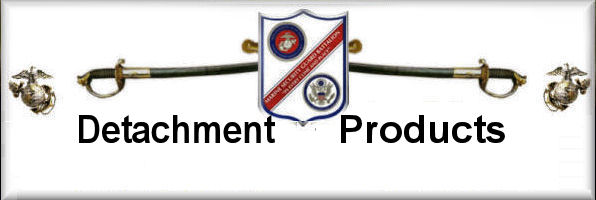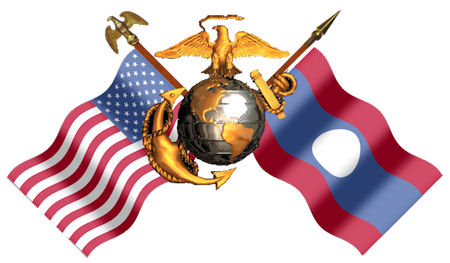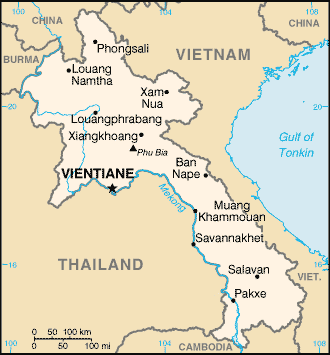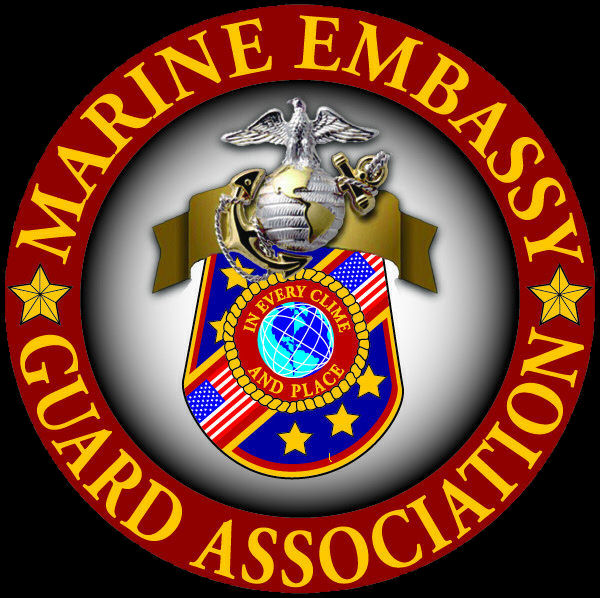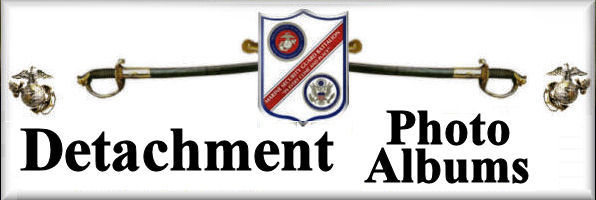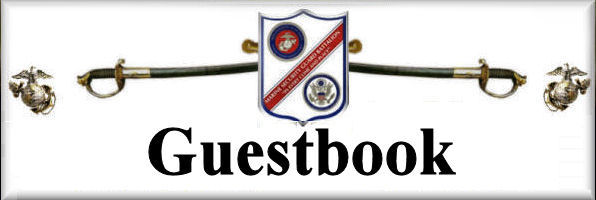2003
|
|
Ambassador: Douglas
Alan
Hartwick
Administrative
Officer:
Regional Marine Officer (RMO):
NCOIC:
Watchstanders:
|
|
|
2002
|
|
Ambassador: Douglas
Alan
Hartwick
Administrative
Officer:
Regional Marine Officer (RMO):
NCOIC:
Watchstanders:
|
|
|
2001
|
|
Ambassador: Douglas
Alan
Hartwick (Appointed: 11Jul01)
Administrative
Officer:
Regional Marine Officer (RMO):
NCOIC:
Watchstanders:
|
|
|
2000
|
|
Ambassador:
Administrative
Officer:
Regional Marine Officer (RMO):
NCOIC:
Watchstanders:
|
|
|
1999
|
|
Ambassador: Wendy
J.
Chamberlin (Until
14Jun99)
Administrative
Officer:
Regional Marine Officer (RMO):
NCOIC:
Watchstanders:
|
|
|
1998
|
|
Ambassador: Wendy
J.
Chamberlin
Administrative
Officer:
Regional Marine Officer (RMO):
NCOIC:
Watchstanders:
|
| February
24,
1998: Khamtai Siphandon becomes President of the Lao People's
Democratic Republic holding that position until June 8, 2006, when he
was replaced by Choummaly Sayasone. |
|
1997
|
|
Ambassador: Wendy
J.
Chamberlin
Administrative
Officer:
Regional Marine Officer (RMO):
NCOIC:
Watchstanders:
|
|
|
1996
|
|
|
1995
|
|
Ambassador: Victor
L. Tomseth
Administrative
Officer:
Regional Marine Officer (RMO):
NCOIC:
Watchstanders:
|
| January
9,
1995: Prince Souphanouvong dies. He was the figurehead leader
of
the Pathet Lao during the Secret War while siding and
receiving
support from Ho Chi Minh and communist North Vietnam until the take
over of the government of the Kingdom of Laos in
1975. He became the President of the Lao People's Democratic
Republic and held that position until August 15, 1991 when replaced by
Kaysone Phomvihane who was the real Pathet Lao strongman. |
|
1994
|
|
|
1993
|
|
|
1992
|
|
Charge
d'Affaires: Charles
B.
Salmon, Jr changed
to
Ambassadorial status 14Jul92)
Administrative
Officer:
Regional Marine Officer (RMO):
NCOIC:
Watchstanders:
|
Full
diplomatic relations
were restored bringing the post back to Ambassadorial level.
The United States Information Service
(USIS)
re-opened their office in Vientiane.
November 21, 1992: President Kaysone Phomvihane dies in
Vientiane. He was the main figure in the Pathet Lao movement
and
subsequent take over of the country in 1975. He was
the
Prime Minister from 1975 until August 15, 1991 when he became President
of the Lao People's Democratic Republic. He remained
President
until his death. Although Prince Souphanouvong had been
appointed
the first President, it was a figurehead appointment with Kaysone being
the one in power. A memorial and museum were made at his
residence. It was one of the American buildings inside of the
old
USAID compound known as "Six Klick City", which housed American Foreign
Service personnel who were accompanied by their dependents.
When
the Americans occupied the compound, it featured bars, retaurants,
tennis courts, swimming pools, a commissary and assorted offices where
the Secret War was orchestrated from. During the 1975
takeover of
Vientiane, the Pathet Lao ejected the Americans and occupied the
compound. Kaysone live here until his death.
November 25, 1992: Nouhak Phoumsavanh was appointed President
to
replace the deceased Kaysone Phomvihane. He held this
position
until February 24, 1998 when replaced by Khamtai Siphandon. |
|
1991
|
|
Charge
d'Affaires: Charles
B.
Salmon, Jr
Administrative
Officer:
Regional Marine Officer (RMO):
NCOIC:
Watchstanders: :
|
| August
15,
1991: Kaysone Phomvihane assumes the Presidency of the Lao
People's Democratic Republic. He replaces Phoumi Vongvichit,
who
had been representing Souphanouvong since October 31, 1986.
Kaysone had been the Prime Minister of the Lao People's Democratic
Republic since it's inception on December 2, 1975. |
|
1990
|
|
Charge
d'Affaires: Charles
B.
Salmon, Jr
Administrative
Officer:
Regional Marine Officer (RMO):
NCOIC:
Watchstanders: :
|
| The government's policies prompted about 10
percent of
the Lao population to leave the country. Laos depended heavily on
Soviet aid channeled through Vietnam up until the Soviet collapse in
1991. In the 1990s the communist party gave up centralised management
of the economy but still has a monopoly of political power. |
|
1989
|
|
Charge
d'Affaires: Harriet W. Isom (Until:
Aug89);
Charlews B. Salmon, Jr (Aug89)
Administrative Officer:
Regional Marine Officer (RMO):
NCOIC:
Watchstanders: :
|
|
|
1988
|
|
Charge
d'Affaires: Harriet W. Isom
Administrative Officer:
Regional Marine Officer (RMO):
NCOIC:
Watchstanders:
|
|
|
1987
|
|
Charge
d'Affaires: Harriet W. Isom
Administrative Officer:
Regional Marine Officer (RMO):
NCOIC:
Watchstanders:
|
| Harriet
W.
Isom |
|
1986
|
|
Charge
d'Affaires ad interim: Theresa A. Tull
(Until:
Aug86); Harriet
W.
Isom
(Aug86)
Administrative Officer:
Regional Marine Officer (RMO):
Detachment Commander:
Watchstanders:
|
| October
31,
1986: Phoumi Vongvichit becomes President of the Lao People's
Democratic Republic acting in stay for Prince Souphanouvong until
August 15, 1991 when Kaysone Phomvihane appoints himself President of
the Lao People's Democratic Republic. |
|
1985
|
|
Charge d'Affaires ad interim:
Theresa
A. Tull
Administrative Officer:
Regional Marine Officer (RMO):
Detachment Commander:
Watchstanders:
|
|
|
1984
|
|
Charge d'Affaires ad interim:
Theresa
A. Tull
Administrative Officer:
Regional Marine Officer (RMO):
Detachment Commander:
Watchstanders:
|
|
|
1983
|
|
Charge
d'Affaires ad interim: William W. Thomas, Jr
(Until: Nov83);
Theresa A. Tull (Nov83)
Administrative Officer:
Regional Marine Officer (RMO):
NCOIC:
Watchstanders:
|
|
|
1982
|
|
Charge d'Affaires ad
interim: William
W. Thomas Jr.
Administrative Officer:
Regional Marine Officer (RMO):
Detachment Commander:
Watchstanders:
|
|
|
1981
|
|
Charge
d'Affaires ad interim: Leo J. Moser (Until: Oct81);
William
W. Thomas, Jr (Nov81)
Administrative Officer:
Regional Marine Officer (RMO):
NCOIC:
Watchstanders: |
|
|
1980
|
|
Charge d'Affaires ad interim: Leo J Moser
Administrative Officer:
Regional Marine Officer (RMO):
NCOIC:
Watchstanders:
Leo
J Moser
|
|
|
1979
|
|
Charge
d'Affaires ad interim: George
B.
Roberts, Jr (Until: Sep79); Leo J. Moser (Sep79)
Administrative Officer:
Regional Marine Officer (RMO):
NCOIC:
Watchstanders: |
|
|
1978
|
|
Charge
d'Affaires ad interim: Thomas J. Corcoran (Until: Mar78);
George B.
Roberts, Jr (Mar78)
Administrative Officer:
Regional Marine Officer (RMO):
NCOIC:
Watchstanders:
|
On May 13,
1978,
deposed King Savang Vattana died from starvation while being held
captive in a reeducation camp near Hua Phan, Laos. He was
buried
in a commoner's grave. His death was not made public until 10
years later. |
|
1977
|
|
Charge d'Affaires ad interim: Thomas
J.
Corcoran
Administrative Officer:
RSO: Michael W. Beckner
Regional Marine Officer (RMO):
NCOIC: MSgt Elio E. Quintana (the last
MSG in
Vientiane, Laos)
Watchstanders: Sgt Tom Ross,
Cpl Mike
Fitts, Cpl K. C. Acres, Cpl Ronnie Mc
Omber,
Sgt. Bruce Martin,
Departures:
Feb77: Sgt Tom Ross , Cpl Mike Fitts, Cpl Ronnie
McOmber to
Tokyo, Japan and Cpl Bruce Martin to Seoul, Korea
Mar77: Cpl K. C. Acres to Hong Kong and MSgt Elio Quintana to Cairo,
Egypt
|
|
|
1976
|
|
Charge d'Affaires ad interim:
Thomas J.
Corcoran
Administrative Officer:
RSO: Michael W. Beckner
Regional Marine Officer (RMO):
NCOIC: SSgt Robert Johnson replaced by MSgt Elio E.
Quintana
Watchstanders: Sgt Barton
Moore, Sgt Tom Ross,
Cpl K. C. Acres, Cpl Mike Fitts, Cpl
Holman, Cpl
Ronnie
McOmber, and Sgt. Bruce Martin,
Departures: SSgt Robert
Johnson; Sgt
Barton Moore to Taipei, Taiwan; Cpl Bob Holman
|
|
|
1975
|
|
Ambassador:
Charles
S.
Whitehouse (Until: 12Apr75); Charge d'Affaires: Christian A.
Chapman
(02Jun75); Charge d'Affaires ad interim:
Thomas J. Corcoran (Aug75)
Administrative Officer:
Regional Marine Officer (RMO):
NCOIC: MSgt William P. Watson replaced by SSgt
Robert Johnson
Watchstanders: Cpl Bob Holman, Sgt
Barton Moore, Francis
"Fran" J. Richard Jr
(Transferred to
Saigon, RVN), Sgt.
Venoy L. Rogers Jr.,
02Jun75: Time
Magazine Extract: Several dozen long haired Laotian students scaled the
9' wire fence surrounding the sprawling USAID compound in Vientiane.
After several hundred reinforcements were bussed in the next
morning, the students kept two U.S. Marines and one U.S. civilian
locked inside the main buildings. They also ransacked the
compound, looting cases of American beer from the commissary.
Some 140 American families living in the suburban -style
residential complex for USAID workers outside Vientiane were
being held virtual prisoners. Pathet Lao and rightist troops,
brandishing potent-looking grenades, were searching cars at the
compound gate and preventing nearly all Americans from leaving.
(NOTE FROM KEN LOGUE: If anybody has more details
on this
article, please contact me. The two Marines would be Marine Security
Guards at the USAID compound. No other Marines were allowed
in
country by virtue of the Geneva Convention on Laos. The
residential complex for dependents was known as "K-6", it was 6
kilometers out of town and was similar to a military housing community.)
After the take over of the government by the
Pathet
Lao in 1975,
the US Information Service, US
Agency for
International Development and Defense Attache Offices closed
.
This resulted in the reduction in size of the
Marine
Security Guard Detachment with fewer posts to man.
|
April:
After the fall of South Vietnam to communist forces in April 1975, the
Pathet Lao with the backing of North Vietnam were able to take total
power with little resistance.
December 2:
King
Savang Vatthana (The Last King of Laos) was forced to
abdicate
his throne and the Lao People's Democratic Republic was established. He
was sent to a re-education camp along with his wife and
children.
Prince Souvanna Phouma was allowed to remain in Vientiane.
The new communist government led by Kaysone Phomvihane (Prime
Minister)
imposed centralized economic decision-making and incarcerated
many
members of the previous government and military in "re-education camps"
which also included the Hmongs.
Prince
Souphanouvong,
the "Red Prince", is appointed President of the newly established Lao
People's Democratic Republic. Souphanouvong is known as the
"Red
Prince" being part of the royal family who affiliated himself with Ho
Chi Minh and the communist regime in North Vietnam and was the
figurehead for the Pathet Lao movement within the Kingdom of Laos.
While nominally independent, the communist government was for many
years effectively little more than a puppet regime run from Vietnam
|
|
1974
|
|
Ambassador:
Charles
S.
Whitehouse
Administrative Officer:
Regional Marine Officer (RMO):
NCOIC: MSgt
William P. Watson
Watchstanders: SSgt Leland, Francis "Fran"
J. Richard Jr, Sgt. Venoy L. Rogers Jr.,
|
|
|
1973
|
|
Ambassador:
G.
McMurtrie Godley (Until: 23Apr73); Charles S. Whitehouse
(Appointed: 24Jul73)
Administrative Officer:
Regional Marine Officer (RMO):
NCOIC: MSgt
William P. Watson
Watchstanders: James Hollister
Shortly after the Paris Peace Accords
led to
the withdrawal of U.S. forces from Vietnam, a ceasefire between the
Pathet Lao and the government led to a new coalition government.
However, North Vietnam never really withdrew from Laos and the Pathet
Lao remained little more than a proxy army for Vietnamese interests.
|
|
1972
|
|
Ambassador:
G.
McMurtrie Godley
Administrative Officer:
Regional Marine Officer (RMO):
NCOIC:
Watchstanders: James Hollister
|
|
|
1971
|
|
Ambassador:
G.
McMurtrie Godley
Administrative Officer:
Regional Marine Officer (RMO):
NCOIC:
Watchstanders: James
Hollister, Michael
Gromachey, LCpl.
Roger W. Settlemyer, Charles
Smith (Transferred to Kuala Lumpur, Malaysia)
|
|
|
1970
|
|
Ambassador:
G.
McMurtrie Godley
Administrative Officer:
Regional Marine Officer (RMO):
NCOIC:
Watchstanders: Hank Corbett,
James Hollister,
Michael Gromachey, LCpl. Roger W. Settlemyer, Charles Smith, Sgt. Wesley P.
Toronto, "Snake"
Urbanek
|
|
In
1972, the
communist People's Party renamed itself the Lao People's Revolutionary
Party (LPRP). It joined a new coalition government in Laos soon after
the Vientiane cease-fire agreement in 1973. Nonetheless, the political
struggle between communists, neutralists, and rightists continued. The
fall of Saigon and Phnom Penh to communist forces in April 1975
hastened the decline of the coalition in Laos. Months after these
communist victories, the Pathet Lao entered Vientiane. On December 2,
1975, the king abdicated his throne in the constitutional monarchy, and
the communist Lao People's Democratic Republic (LPDR) was
established.
The
new
communist government imposed centralized economic decision-making and
broad security measures, including control of the media and the arrest
and incarceration of many members of the previous government and
military in "re-education camps." These draconian policies and
deteriorating economic conditions, along with government efforts to
enforce political control, prompted an exodus of lowland Lao and ethnic
Hmong from Laos. About 10% of the Lao population sought refugee status
after 1975, many of whom resettled in third countries, including the
United States. From 1975 to 1996, the U.S. resettled som
e
250,000 Lao
refugees from Thailand, including 130,000 Hmong.
|
|
1969
|
|
Ambassador:
William H. Sullivan (Until: 18Mar69);
G.
McMurtrie Godley (Appointed: 13Jun69)
Administrative Officer:
Regional Marine Officer (RMO):
NCOIC: Robert
Wilson, 1st Sgt.
Watchstanders: Hank Corbett, Melvin
Bourgeois, Jim Dentinger, Al Ellington, Dan Hignight, Bob
Hoover, Ernie Jones, John Milsap, Ken Muse, John Serpico, Sgt. Wesley
P. Toronto, "Snake"
Urbanek |
|
|
1968
|
|
Ambassador:
William H. Sullivan
Administrative Officer:
Regional Marine Officer (RMO):
NCOIC:
Robert Wilson, 1stSgt.
Watchstanders: Hank Corbett, Melvin
Bourgeois, Jim Dentinger, Jeff Dunn, Al Ellington, Dan Highnight, Sgt
Joseph Holliman, Bob Hoover, Ernie Jones, Hugh Scott "Scotty"
Levann, John Milsap, Ken Muse, Cpl Aura Norton, John Serpico, Steve
"Ski" Stypczynski -
accidentally shot on post Aug68 - medevaced and died shortly thereafter
of wounds),
|
|
|
1967
|
|
Ambassador: William H.
Sullivan
Administrative Officer:
Regional Marine Officer (RMO):
NCOIC: 1stSgt
John L.
Devora; SSgt George F. Babonas (ANCOIC)
Watchstanders:
Hank
Corbett, Cpl Harry Feltenberger, Sgt Ralph S. Lovelidge III, Cpl
Michael E. Brown, Cpl Frank Campbell Jr,
Cpl Vinson
L. Davis, Jeff Dunn, Cpl Thomas E. Fargusson, Sgt
Joseph
Holliman, Cpl David G. Krebs, Hugh Scott "Scotty" Levann, Cpl
Aura Norton, Sgt Paul E. Olson , Sgt Joseph W. Parsons and
Cpl
Gerald R. Wilkens
Departures: Cpl Harry Feltenberger and Cpl Vinson L.
Davis
went to Saigon; Sgt Ralph S. Lovelidge rotated to CONUS
|
|
| 1966 |
|
Ambassador:
William H. Sullivan
Administrative Officer: Nicholas G. W. Thorpe
Regional Marine Officer: (RMO): Major White
NCOIC: GySgt July C. Dear replaced by GySgt
John Devora
(Apr66);
A/NCOIC: SSgt George F. Babonas
Watchstanders: SSgt Joe Dunn, SSgt Santos Romero,
SSgt
Samuel
L. Holmes, Sgt L. Mike Neal, Sgt Joe Parsons, Cpl Tom
Fargusson, Cpl Harry Feltenberger, Cpl Garner, Cpl
Ronald
Haines, Cpl Dave Krebs, Cpl Richard D. Mullins, Cpl
Paul
Olson, Cpl Charles Sheehan Jr, Cpl Charlie G. Sipes, Cpl Stan
E.
Wenger, Cpl Ronald A. Zemaitis, Cpl Ralph S. Lovelidge III, LCpl Fred
L. Rice
PhotoAlbum
Detachment
Pictures
Departures:
Feb66: Sgt L.
Mike Neal and
wife Carolyn departed for CONUS
LCpl Freddie L.
Rice went to
Manila, P.I.. Cpl Stanton E. Wenger went to Tokyo, Japan
|
1965
|
|
Ambassador:
William H. Sullivan
Administrative Officer:
Nicholas G. W.
Thorpe
Regional Marine Officer (RMO):
Major White
NCOIC: GySgt July Christmas Dear / ANCOIC: Sgt
George F.
Babonas
Watchstanders:Sgt Samual L. Holmes, Sgt L. Mike
Neal,
Sgt Carl D. Sanders, Cpl William B. Hubbard, Jr, Cpl Garner,
Cpl
Dorsey W. Jackson, Cpl Kenneth E. Logue, Cpl Richard D.
Mullins, Cpl J. Howard Oakley, Cpl Charlie G.
Sipes, Cpl
Stan E. Wenger, Cpl Ronald A. Zemaitis, Cpl Erich
Zinn, LCpl Ralph S. Lovelidge
III, LCpl Fred L.
Rice, and LCpl C. R. Sheehan Jr
Arrivals:
May65: Sgt
L. Mike Neal
arrived from Canberra, Australia
Departures:
Cpl Johnny
I. Miller
went to Saigon
April: Cpl Erich Zinn to Saigon, RVN
15Sep: Cpl's William B. Hubbard Jr and Kenneth E. Logue to Saigon, RVN
October: Sgt Carl D. Sanders to Saigon, RVN
November: Cpl J. Howard Oakley to Rangoon, Burma and Cpl Dorsey W.
Jackson to Hong Kong
(Notes from
Ken Logue:
Life for MSG's in Vientiane was interesting. We
were
restricted on travel to an 8 square mile area around Vientiane because
the rest of the country was contested with the Pathet Lao. At
the
Marine House, we had a pretty good size bar. On certain
occasions, we would have 3 or 4 bartenders. We also had a
large
veranda where we had set up a rec-room, with weights, a ping-pong table
and would show movies that circulated through the community.
We
had a volley-ball court , horseshoes and a garden in the yard.
On
occasion, we would have a "pig-roast" in the yard and invite
guests over. A lot of the "singles" group of DOS employees
would
hang out at the Marine House. We had the USAID Compound,
which
was occupied primarily by USAID, but housed also the Air Force and Army
Attaches. This was also the American Community Center where
we
had a bowling alley, swimming pool, movie theater, commissary, and it
is where most US functions were held, i.e. MC Ball, New Year's Party,
etc. DOS employees who were accompanied by their dependents,
resided at K-6 Compound. It reminded me of a government
quarters
compound on a lot of military installations. In addition to
the
government quarters there, they had a huge field that we use to play
baseball and football on. A lot of different groups, Army and
Air
Attache, MSG's, USAID and different sections of the embassy were big
enough to organize teams and we would compete for fun. We did
a
lot of socializing with residents at K-6. Some of the MSG's
dated
and married dependents from K-6. We also had "Mom &
Pop"
Bill Remley. They had been every Marine Security
Guard's
"Mom & Pop" for as long as who knows when.
Ralph
Lovelidge tells me that "Mom Remley" passed away a few years
back. "Pop" Bill Remley is still alive living in Florida.
|
| Photo Album:
Detachment Pictures |
|
1964
|
|
Ambassador:
Leonard C.
Unger (Until: 01Dec64); William H. Sullivan (Appointed
26Nov64)
Regional Security Officer:
Nicholas G. W. Thorpe
Regional Marine Officer (RMO):
NCOIC: GySgt July Christmas Dear
/ ANCOIC:
Sgt Billy R. Garrett , Paul
Wilson
(NCOIC) (63-64)
Watchstanders: Sgt Robert M.
Jenkins, Cpl Karl
V. Dauphin,
Cpl Johnny I, Miller, Cpl Richard D. (Moon) Mullins,
LCpl Richard P.
(Baby Huey) Davis, LCpl Dorsey W. Jackson, LCpl J.
Howard
Oakley and LCpl Erich Zinn, Cpl Ronald Zemaitis and
LCpl
Charlie Sipes; "Gippy" Cade III, Glenn Herrell, Walt Keays and Bob
Stephens
|
On
27Aug64, Cpl Kenneth E. Logue, Sgt Carl D. Sanders, Cpl
William
(Bill) B. Hubbard Jr and LCpl J. Howard (Buck) Oakley arrived in
Vientiane, Laos after being assigned as Marine Security Guards from MSG
Class 1-65 at Henderson Hall.
Around 01Nov64, Cpl Ronald A. Zemaitis and LCpl Charlie G. Sipes
arrived on post.
Departures:
Paul Wilson (NCOIC) went to Calcutta
09Sep64: "Gippy" Cade III, Walt Keays, Glenn Herrell and Bob Stephens
Photo Album:
Detachment
Pictures
|
|
1963
|
|
Ambassador:
Leonard C. Unger
Administrative Officer:
Regional Marine Officer (RMO):
NCOIC: Paul Wilson
Watchstanders: "Gippy" Cade III, Walt
Keays,
Glenn Herrell and Bob Stephens
|
|
1962
|
|
Ambassador:
Winthrop G. Brown (Until: 28Jun62);
Leonard C. Unger
(Appointed: 03Jul62)
Administrative Officer:
Regional Marine Officer (RMO):
NCOIC: GySgt
Robert Lance
Watchstanders:
|
|
|
1961
|
|
Ambassador:
Winthrop G. Brown
Administrative Officer:
Regional Marine Officer (RMO):
NCOIC: Alfred L. Madsen replaced by SSgt Robert Lance
Watchstanders: Manual C.
Perez, Sgt
Austin W. Bromley, LCpl
Albert M.
Kozusko Jr
Departures:
Alfred L. Madsen went to
Singagpoe,
Malaysia as the NCOIC
A second Geneva conference, held in 1961-62, provided for the
independence and neutrality
of Laos,
Growing American and North Vietnamese military presence in the country
increasingly drew Laos into the Second Indochina War1954-1975
For nearly a decade, eastern Laos was subjected to the heaviest bombing
in the history of warfare[1], as the U.S. sought to destroy
the Ho Chi
Minh
Trail that passed through Laos. The country was also
repeatedly
invaded by Vietnam. ( |
|
|
1960
|
|
Ambassador:
Horace H. Smith (Until
21Jun60); -
Winthrop G. Brown (Appointed: 05Jul60)
Administrative Officer:
Regional Marine Officer (RMO):
NCOIC: Alfred L. Madsen
Watchstanders: Edward L.
Mullins (Transferred to Taipei, Taiwan), Manual C. Perez, Robert D.
Woods.
In 1960 Captain Kong Le staged a coup when the cabinet was
away
at the royal capital of Luang Prabang and demanded reformation of a
neutralist government.
The second coalition government, once again led by Souvanna
Phouma, was not successful in holding power. Rightist forces under
General Phoumi
Nosavan drove out the neutralist government from power. |
|
1959
|
|
Ambassador:
Horace H.
Smith
Administrative Officer:
Regional Marine Officer (RMO):
NCOIC: James Hackett replaced by Alfred L. Madsen
Watchstanders: Edward L.
Mullins, Robert D.
Woods
Departures:
James Hackett went to Saigon as the NCOIC
Laos gained full independence following the French defeat by the
Vietnamese communists and the subsequent Geneva peace
conference
in 1954.
|
| .King Sisavangvong
died. He
was the longest ruling king on earth at the
time of his death. He had 12 wives and at least 24
children. He was
succeeded by his son, Savang Vatthana, who ruled
until
1975,
abdicating to the Pathet Lao |
|
1958
|
|
Ambassador:
J. Graham Parsons (Until: 08Feb58);
Horace H.
Smith (Appointed: 26Mar58)
Administrative Officer:
Regional Marine Officer (RMO):
NCOIC: George Jennings replaced by James Hackett
Watchstanders:
Robert D. Woods,
John H. Rinen Jr.,
Richard Aitken
Departures:
George
Jennings went to
Saigon as the NCOIC
Coalition government collapsed in 1958 under pressure from the United
States |
|
1957
|
|
Ambassador:
J. Graham Parsons
Administrative Officer:
Regional Marine Officer (RMO):
NCOIC:
Pete Yersavich replaced
by George Jennings
Watchstanders: John H. Rinen Jr., Pieter R. Westervelt
(Transferred to Saigon, RVN),
Richard Aitken, Fred Siverly
Departures:
Pete
Yersavich went to
Saigon as the NCOIC
First coalition government, led by Prince Souvanna Phouma,
was formed |
|
|
1956
|
|
Ambassador:
Charles W. Yost (Until: 27Apr56);
J. Graham
Parsons (Appointed: 29May56)
Administrative Officer:
Regional Marine Officer (RMO):
NCOIC: Pete Yersavich
Watchstanders: Peter R. Westervelt, Fred Siverly
|
|
|
1955
|
|
Ambassador:
Charles W. Yost
Administrative Officer:
Regional Marine Officer (RMO):
NCOIC:
Watchstanders:
|
|
|
1954
|
|
Ambassador:
Donald R. Heath (Termination: 01Nov54);
Charles
W. Yost Appointed: 18Aug54
Administrative Officer:
Regional Marine Officer (RMO):
NCOIC:
Watchstanders:
|
|
|
1953
|
|
Ambassador:
Donald R. Heath
Administrative Officer:
Regional Marine Officer (RMO):
NCOIC:
Watchstanders:
|
|
|
1952
|
|
Ambassador:
Donald R. Heath
Administrative Officer:
Regional Marine Officer (RMO):
NCOIC:
Watchstanders:
|
|
| The
official
Lao flag was adopted. It had three white elephants under a
white
parasol. The elephants represented the three kingdoms of
Luang
Prabang, Vientiane and Champasak being united (under the
parasol). This remained the National Flag until 1975 when the
Lao
People's Democratic Republic was established, and the present day flag
took it's place as the National Flag. |
|
1951
|
|
Ambassador:
Donald R. Heath
Administrative Officer:
Regional Marine Officer (RMO):
NCOIC:
Watchstanders:
|
|
|
1950
|
|
Ambassador:
Donald R. Heath (Envoy Extraordinary)
Appointed 29Jun50
Administrative Officer:
Regional Marine Officer (RMO):
NCOIC:
Watchstanders:
|
| The United States opened its first legation in
Laos. |
|
1949
|
|
|


